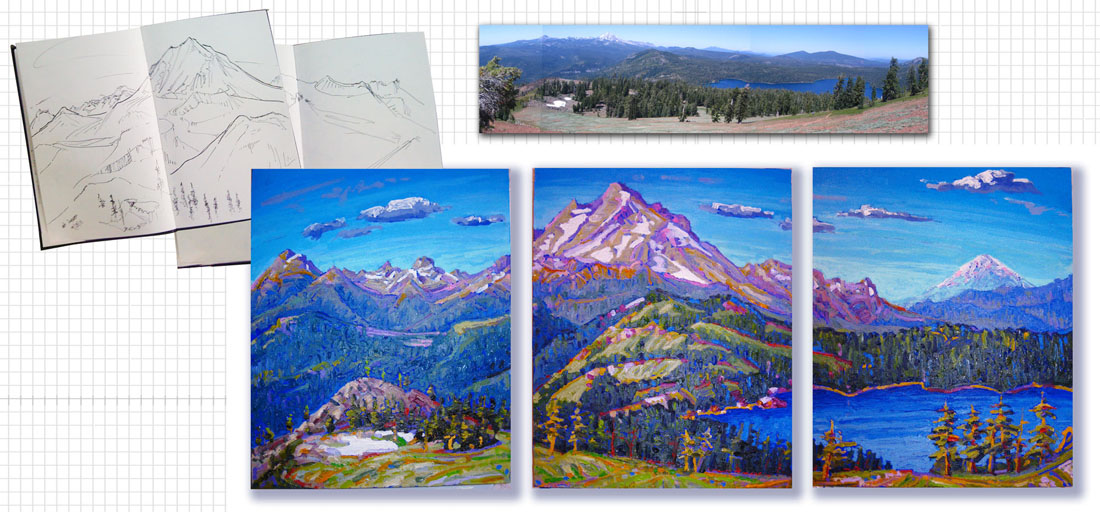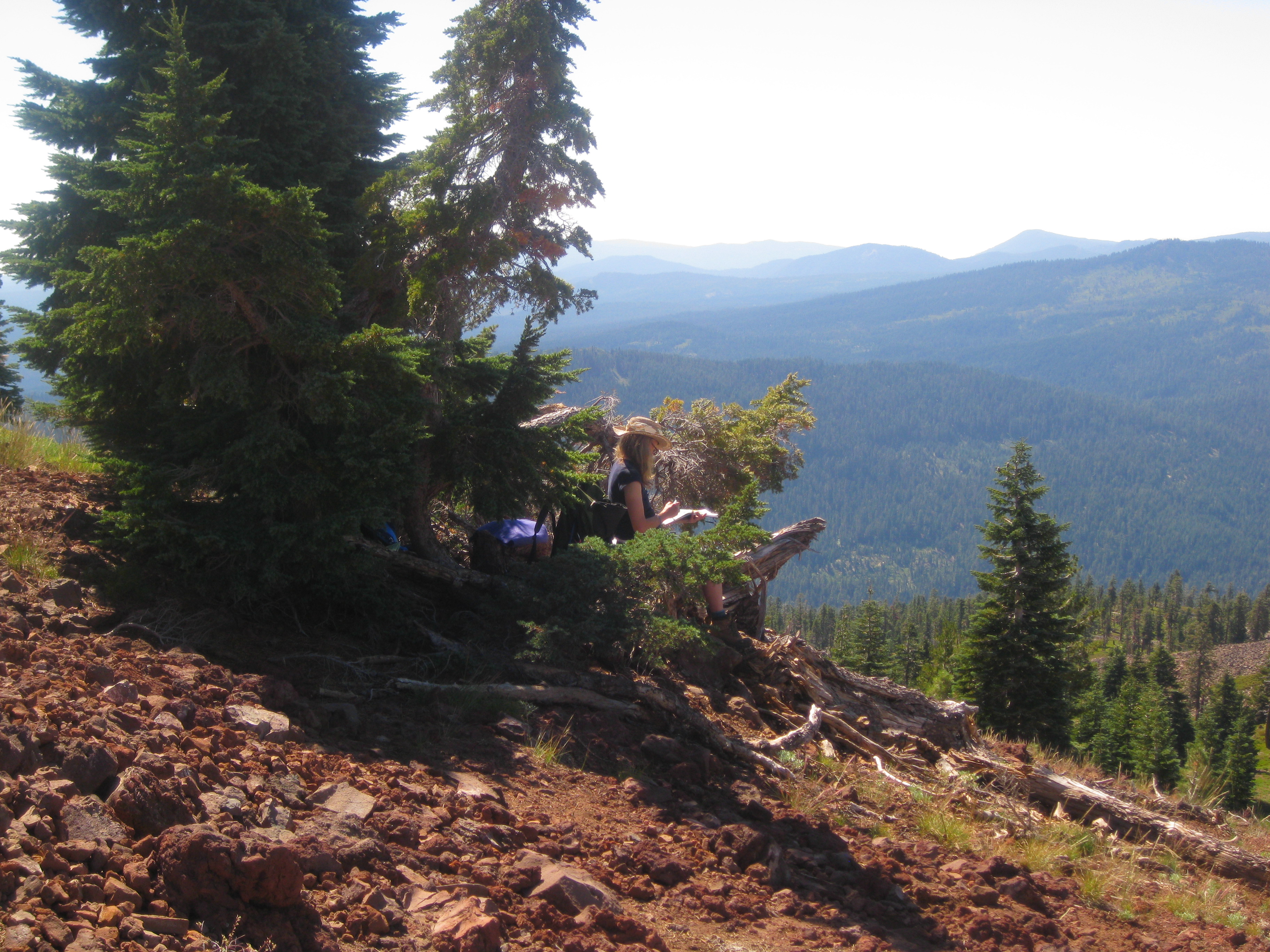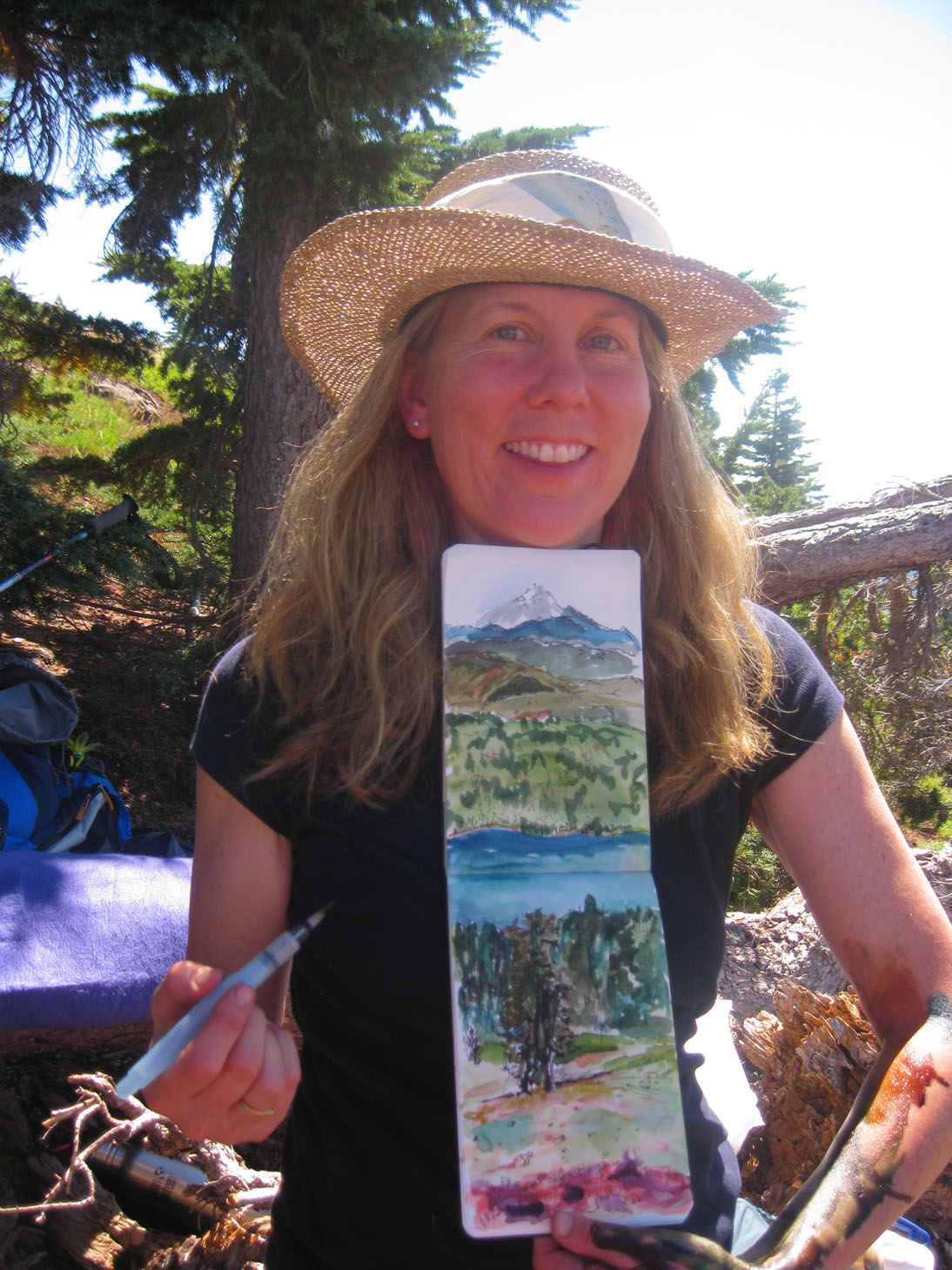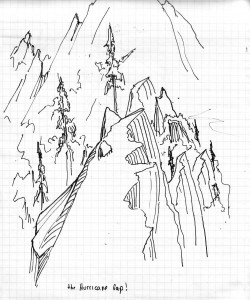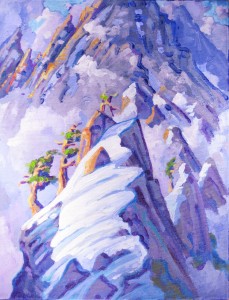Anasuya planned a three-day weekend at Juniper Lake in Lassen National Park.
Including the long gravel road entrance it was about an hour and a half from her house in the canyon. We lucked out and found the last campground on the lake with the hulk of Mt. Lassen towering over the other side. In Chico it was dry and summer hot but as we worked our way up highway 32 it felt like we were heading into the cool fresh air of the mountains. It was refreshing to wake up to the cold in the morning and we crouched around a fire as we drank tea and camp coffee.
By 8.30 we were on the trail to the Mt. Harkness lookout. We had lunches packed, art supplies, hats, sunscreen and a days supply of water. The trail was pretty mild as it wound through a forest of assorted northern California conifers and before long we popped out onto a steep meadow of blue, purple, and yellow wildflowers. It felt especially fresh as we made our way under the basalt towers that flanked the headwall. As we made our way onto the final slope to the top I turned to see the entire mountain complex of central northern California come into view. It was a beautiful clear morning and I knew immediately that I was going to do a painting from this day.
We visited with the volunteer at the lookout and took in the view from all directions. It seemed as though we could see all of northern California with Mt. Shasta standing in the distance, faded by the atmosphere of almost eighty miles. We left the lookout and moved just down slope towards a twisted juniper tree standing at the top of a steep slope of scree. The shade felt good and from that position it seemed like we were sitting in the balcony of a grand amphitheater.
We had a relaxing lunch and broke out the art supplies. Anasuya is into stamping and card making and she had taken to using her inks as a sketching medium. She went to work in the bound sketchbook I had given her. The first thing I did was take a full panorama of photos sweeping all the way across with my camera. This was a wide view and I was trying to figure out how I would get all of that into a drawing. I went to work in my 9×6 black field book with a razor sharp felt tip pen. My working method is simple: look and interpret. Make one mark at a time and make it with purpose.
I started drawing the northwest shoulder of Mt. Harkness, and worked my way out and across. When I filled both pages of the book I just flipped the page and kept on going. We both worked for about an hour. I noticed that Anasuya had taken to mixing the water-soluble inks on her forearm to get just the right color, then applying it to her piece. She had taken a completely different view from me, a vertical view as opposed to my horizontal view. She did a nice color sketch and I was happy with the work I did. We gathered our gear and worked our way down the mountain. When the trail finally pulled alongside of the lake we veered off…found a hidden spot, stripped off our clothes and jumped in California style. It felt good to wash off the dust of a day on the trail. We had a great weekend at Juniper Lake and I would recommend it to anyone.
When I got home I assembled the photos I had taken into one long cumbersome panorama photo. I liked the version I did in my sketchbook better. I decided that the painting would come directly from the location drawing. For some time I had been kicking around the idea of a multi-panel painting and decided that the drawing would fit nicely into that format. Each page from the sketchbook got it’s own panel. For the last year or so most of my paintings have been acrylic but I decided to use my other painting medium, water soluble oil paints on this piece. I like the heavy texture and when I paint with them I use my finger, and q-tips to apply the paint. I bought three 11×14, 1.5” deep-cradled Ampersand Art panels. These panels are really nice with a solid painting board mounted on a softwood frame, perfect for multi panel work.
It was tricky drawing the image on all three panels. I had to compact the wide angel to get Mt. Shasta in the picture plane. I started by painting the sky with acrylic paint. I played up the idea of an atmospheric arch to portray a wide view. I started painting with the oils using my fingers and worked the same sweep-around that I did when I was working on the location drawing. The northwest shoulder of Mt. Harkenss first, then out and around. It took about two weeks to complete the painting.
I have spent the last ten years studying the history of landscape painting in Northern California. It is a rich tradition of William Keith, Thomas Hill and even out-of towners like Albert Bierstadt. Their philosophical idea was that the painter should strive to synthesize the poetry of nature with objective fact. That is the attitude I take when painting. I can’t help but think about how my work fits into that rich landscape history.
It’s like having a dialogue with the masters.
For more on this idea of a dialogue with the masters see the Mt. Shasta page
To inquire about purchasing this or another painting please use the contact page
of this site.

